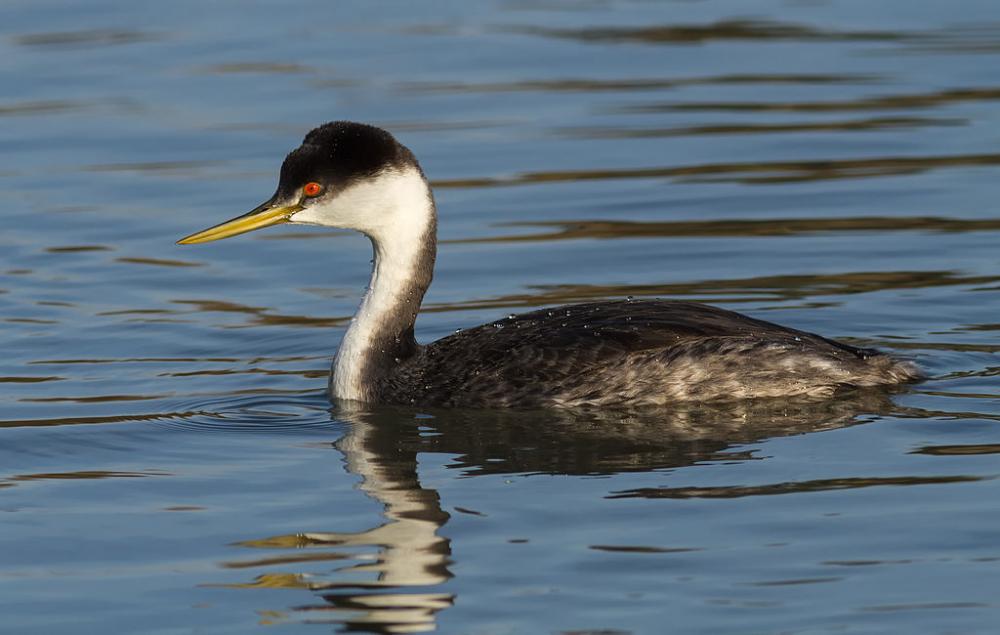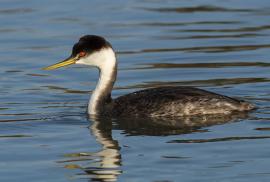Guide to Boreal Birds
Overview
The mating display of the Western Grebe is spectacular, with both members of a pair paddling vigorously and churning across the surface of the water in an upright posture. Sometimes many pairs in a colony display simultaneously. During migration Western Grebes fly in loose flocks but spread out to feed during the day. On their coastal wintering grounds these birds often fall victim to oil spills and to insecticides that accumulate in their food, build up in their bodies, and reduce their breeding success.
Description
22-29" (56-74 cm). A large slender grebe with a long neck. Blackish above with black of cap extending below eyes; white below and on front of neck. Bill long, slender, and greenish yellow. Long white wing stripe shows in flight. See Clark's Grebe.
Voice
A rolling kr-r-rick, kr-r-rick! sounded most often on breeding grounds but sometimes heard in winter.
Nesting
3 or 4 bluish-white eggs, stained brown or buff, on a floating nest anchored to reeds. Nests in dense, noisy colonies.
Habitat
Breeds on large lakes with tules or rushes; winters mainly on shallow coastal bays and estuaries.
Range/Migration
Breeds from British Columbia, Saskatchewan, and Minnesota south to southern California; sparsely in Arizona, New Mexico, and Colorado. Winters along Pacific Coast from southeastern Alaska to California, on Gulf Coast of Louisiana and Texas, and on large river systems in West.



